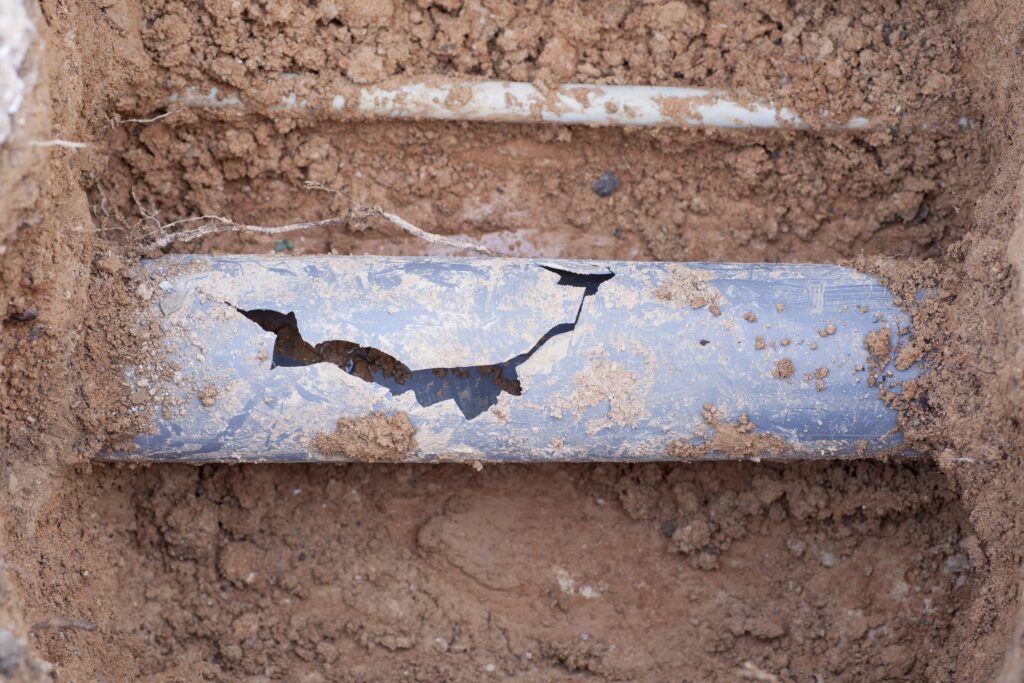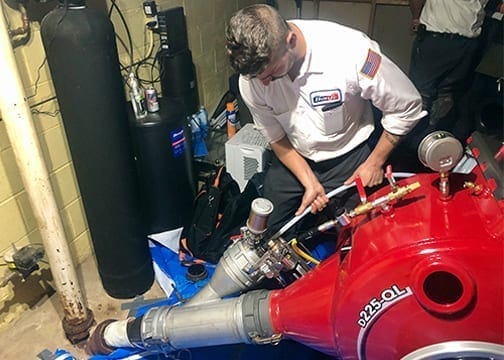Drain pain?
Is it more than just a drain clog?
Clogged drain in the sink or toilet? Water backing up in the basement or laundry room floor drain? If you have chronically slow drains, you might have a bigger problem than just a drain clog. It could be a problem with your main sewer line.
Is it just a clog or is it something more serious?
Review this checklist to see if any of the following apply:
- One or more floor drains and/or shower drain back up regularly.
- The drains on the bottom level of my home back up regularly or are slow to drain
- Multiple drains back up simultaneously.
- The toilets make a gurgling noise.
If you checked any of the above items, the problem might be more than just a simple clog. Regular drain backups can signal an issue with the main sewer line that connects your home’s pipes to the city’s system.
You might be surprised to learn that, as a homeowner, you are responsible for that sewer line.

The drains and toilets inside your home all converge to a main pipe that takes the waste water from your home out to the city’s sewer line that runs under the street. The sewer line running underground from your home to the city’s sewer line is your responsibility. If it’s broken, leaking, damaged, or has tree roots growing into it, you (not the city) are responsible for taking care of the issue.
Sewer line problems need to be assessed and repaired by experienced professionals. Some sewer back-ups are easily resolved by changing your lifestyle habits. For example, stop putting “flushable” wipes, feminine products, or dental floss down the toilet! In other cases, however, the issue causing sewer back-ups can be more serious.
Sewer lines can be made of a variety of materials – clay, cast iron, PVC, or orangeburg pipe (a type of fiber). While the typical life of a residential sewer line is about 30 years, a variety of factors can shorten this life span significantly. Tree roots, heavy rains, frost heave, landscaping, or street repairs in front of your home can all cause sewer lines to be compromised, break, or collapse entirely.
Our Bonfe Sewer Advisors can inspect your sewer line with a special camera that offers a clear picture of the inside of your sewer – the entire length of the pipe.
If your sewer line is compromised or collapsed, there are several solutions.
Complete line replacement: In the most severe cases, an entire new sewer pipe may need to be put in place. The old line is dug out and replaced with new PVC pipe. Most sewer pipes are 6 to 10 feet underground, so a dig can be a significant disturbance to your yard.
Re-Lining: If your existing sewer line is in good enough condition, a new liner can be inserted into the existing pipe. Re-lining provides a permanent solution to your sewer issues, it’s guaranteed for life, and can be done without digging up your front yard.

Spot replacement or Patches: If just a small portion of your sewer line needs to be re-lined or replaced, the repair work can be done on just that section of pipe. Be aware, though, that if the compromised section is due to age and environmental factors, the rest of your line may need to be replaced in the future.
Blade cleaning or Hydro jetting: If your sewer line is in good condition, a thorough cleaning of the line may be all that’s needed to keep things flowing smoothly. Sludge build-up and small tree roots can be cleaned out using these tools, and at the same time the inside of the sewer is smoothed out, creating a better environment for flow.
What if I just have a slow drain?
If your drain problems are not chronic, then you may just be dealing with a good old-fashioned clog. It’s a good idea to start by shining a flashlight down the drain to see if there’s anything obvious in the way. You’d be surprised how often an action figure, rubber ducky, or wash cloth ends up crammed down a drain.
If all appears to be clear, you have a couple of options:
- Use a drain snake if you have one and feel comfortable using it. It’s a messy job but can often remove hair and other basic clogs.
- Run hot water down your kitchen drains once a month for at least 5 minutes to help keep your pipes flowing smoothly.
- Call Bonfe to have a drain technician clear your drain for you and recommend an enzyme-based drain cleaner to prevent future clogs.
What about chemical drain cleaners?
The most-known drain cleaners on the market use harsh chemicals that can contribute to lasting and costly damage to your pipes. NEVER use a chemical drain cleaner in your home.
Only use enzyme-based drain cleaners, which can help clear and prevent sludge build-up.
Drain maintenance can be a dirty business. While filters, drain snakes, and enzyme-based cleaners are things you can do regularly at home, don’t be afraid to ask Bonfe for help. No job is too messy for our drain experts!

